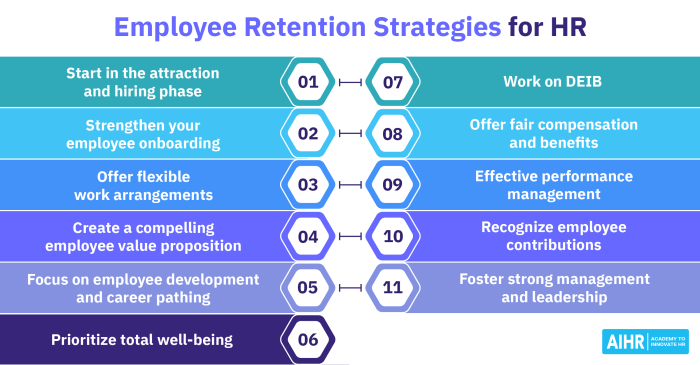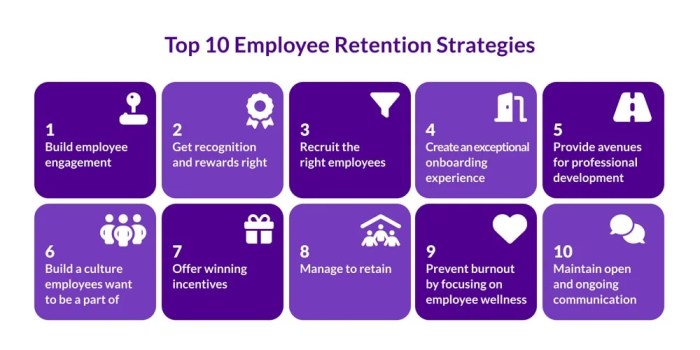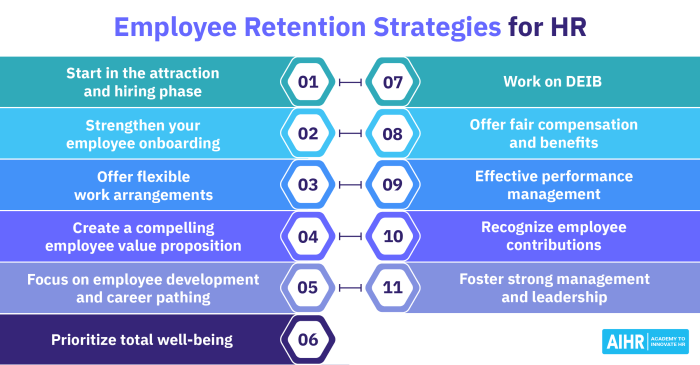
Workplace Culture: Its Impact on Employee Retention
Workplace culture and how it affects employee retention are topics that have become increasingly critical in today’s competitive business landscape. The way a company treats its employees, the values it upholds, and the environment it fosters can significantly impact its ability to attract and retain top talent.
A positive and supportive workplace culture can be a powerful tool for boosting employee morale, fostering a sense of belonging, and ultimately driving business success. However, a toxic or negative culture can have the opposite effect, leading to increased employee turnover, decreased productivity, and a decline in overall company performance.
This blog post delves into the multifaceted nature of workplace culture, exploring its impact on employee retention and providing insights into building a culture that values and retains its workforce. We’ll examine the key factors that contribute to a positive workplace culture, discuss strategies for fostering trust and open communication, and explore the importance of providing opportunities for professional development and career advancement.
By understanding the intricacies of workplace culture, businesses can create a more engaged, productive, and ultimately more successful workforce.
Defining Workplace Culture
Workplace culture is the shared values, beliefs, behaviors, and practices that characterize a company or organization. It’s the invisible force that shapes how employees interact with each other, their work, and the company itself. This culture is a complex tapestry woven from numerous threads, each contributing to the overall feel and atmosphere of the workplace.
Tangible Aspects of Workplace Culture
Tangible aspects of workplace culture are the visible elements that embody its values and beliefs. These elements provide a tangible representation of the culture, allowing employees to experience and understand it on a practical level.
- Dress Code:A strict dress code might indicate a formal and traditional culture, while a casual dress code might suggest a more relaxed and innovative environment.
- Communication Style:Open and transparent communication is a hallmark of a collaborative culture, while a hierarchical culture might emphasize formal communication channels.
- Work-Life Balance Policies:Generous vacation time and flexible work arrangements signal a culture that values employee well-being and personal life, while a culture focused on productivity might have stricter policies.
Types of Workplace Cultures
Workplace cultures can vary widely, influencing employee engagement, productivity, and retention. Here are some common types of workplace cultures and their potential impact on employee retention:
- Collaborative Culture:This culture emphasizes teamwork, open communication, and shared decision-making. Employees feel valued and empowered, leading to higher job satisfaction and retention. For example, companies like Google and Zappos are known for their collaborative cultures, which foster innovation and employee engagement.
- Competitive Culture:This culture thrives on individual achievement and performance. While it can drive high productivity, it can also lead to a stressful work environment and potentially higher turnover rates. For instance, companies in the financial sector often have competitive cultures, where employees are constantly striving to outperform their peers.
A positive workplace culture, where employees feel valued and engaged, is crucial for retention. It’s about creating an environment where people can thrive, just like the energy Red Bull brings to events like the Half Court World Finals in New York City.
When employees feel like they’re part of something bigger, they’re more likely to stay and contribute to the company’s success.
- Hierarchical Culture:This culture emphasizes clear lines of authority and strict adherence to rules. While it can provide stability and structure, it can also stifle creativity and innovation, potentially leading to lower employee satisfaction and retention. Companies in traditional industries, such as banking and manufacturing, often have hierarchical cultures.
The Impact of Workplace Culture on Employee Retention: Workplace Culture And How It Affects Employee Retention

Workplace culture plays a pivotal role in employee retention. It’s not just about the work itself; it’s about how employees feel about their environment, their colleagues, and their overall experience. A positive and supportive culture fosters a sense of belonging, leading to increased job satisfaction and a strong desire to remain with the company.
A positive workplace culture is crucial for employee retention. It’s about creating a sense of belonging and purpose, fostering collaboration, and encouraging growth. This is similar to the way Tajh Ariza felt when he decided to transfer to his dad’s alma mater, following in his footsteps and taking on the family name.
In a way, he’s embracing a legacy, just like employees are drawn to companies that cultivate a strong, supportive culture.
Conversely, a toxic or negative workplace culture can drive employees away, leading to increased turnover and decreased productivity.
A positive workplace culture, where employees feel valued and respected, is crucial for retention. It’s all about creating an environment where people feel comfortable being themselves, both professionally and personally. It’s interesting to think about this in the context of Dua Lipa’s recent comments, where she suggests some artists are ruthless in sharing their private lives.
In a similar way, a healthy work environment encourages a sense of boundaries and respect, fostering a sense of trust and security that ultimately contributes to employee retention.
Factors Contributing to Employee Retention
A positive workplace culture is built on several key factors that directly impact employee retention. These factors create an environment where employees feel valued, motivated, and invested in their work.
- Recognition and Appreciation:Employees want to feel valued and appreciated for their contributions. This can be achieved through regular feedback, performance reviews, awards, and public acknowledgement of their accomplishments.
- Growth Opportunities:Providing employees with opportunities for professional development and advancement is crucial for retention. This can include training programs, mentorship opportunities, and clear career paths. Employees who feel they are growing and learning are more likely to stay with the company.
- Work-Life Balance:A healthy work-life balance is essential for employee well-being and job satisfaction. Companies should promote flexible work arrangements, reasonable workloads, and a culture that values personal time. This shows employees that their well-being is a priority.
- Open Communication:Effective communication is vital for a positive workplace culture. Employees should feel comfortable sharing their ideas, concerns, and feedback. This can be facilitated through regular team meetings, open-door policies, and anonymous feedback channels.
- Strong Leadership:Strong leadership is essential for creating a positive and supportive workplace culture. Leaders should set the tone for the organization, model desired behaviors, and empower employees to contribute their best.
Building a Culture that Retains Employees
Creating a positive and supportive workplace culture is essential for retaining valuable employees. It involves fostering a sense of belonging, trust, and opportunities for growth. By implementing strategies that address employee needs and aspirations, organizations can cultivate a workplace that encourages loyalty and commitment.
Fostering Trust and Open Communication
Open and honest communication is crucial for building trust within an organization. When employees feel comfortable sharing their thoughts and concerns, they are more likely to feel valued and engaged.
- Regular Feedback:Implement regular feedback mechanisms, such as performance reviews, 360-degree feedback, and open forums, to encourage open dialogue and constructive criticism.
- Transparency and Communication:Share information about company performance, goals, and strategies openly and transparently. This fosters a sense of ownership and trust among employees.
- Active Listening:Train managers and leaders to actively listen to employees’ concerns and ideas. This shows that their input is valued and taken seriously.
Employee Engagement Initiatives
Engaging employees through various initiatives can boost morale, foster a sense of community, and create a more positive work environment.
- Social Events and Team Building Activities:Organize team outings, social events, or volunteer opportunities to encourage interaction and camaraderie among employees.
- Employee Recognition Programs:Implement recognition programs that acknowledge and celebrate employee achievements, both big and small. This demonstrates appreciation and motivates employees to perform at their best.
- Wellness Programs:Offer employee wellness programs that promote physical and mental well-being. This shows that the company cares about its employees’ overall health and happiness.
Opportunities for Professional Development and Career Advancement
Providing opportunities for professional development and career advancement is essential for retaining employees who are ambitious and eager to grow.
- Training and Development Programs:Offer training programs, workshops, and mentorship opportunities to help employees acquire new skills and advance their careers.
- Career Pathing and Mentorship:Create clear career paths and provide mentorship opportunities to guide employees in their professional growth.
- Internal Mobility:Encourage internal mobility by promoting from within and creating opportunities for employees to move to different roles or departments.
Measuring and Evaluating Workplace Culture
It’s not enough to simply implement workplace culture initiatives; you need to measure their effectiveness to ensure they’re actually making a difference. Measuring and evaluating workplace culture allows you to identify what’s working, what’s not, and where you can improve.
This data-driven approach ensures that your efforts are aligned with your goals and that you’re creating a positive and productive environment for your employees.
Employee Surveys and Feedback Mechanisms
Regularly gathering feedback from your employees is crucial for understanding their experiences and identifying areas for improvement. Employee surveys and feedback mechanisms provide valuable insights into how employees perceive the workplace culture and can help you gauge the impact of your initiatives.
Employee surveys and feedback mechanisms provide valuable insights into how employees perceive the workplace culture and can help you gauge the impact of your initiatives.
- Anonymous surveys:These allow employees to express their opinions freely without fear of retribution. They provide valuable data on employee satisfaction, engagement, and perceptions of the company culture.
- Focus groups:These facilitated discussions allow employees to share their thoughts and experiences in a more interactive setting. They can be particularly helpful for exploring complex issues and gaining deeper insights.
- Open communication channels:Encourage open and honest communication through suggestion boxes, employee forums, and regular manager-employee check-ins. This allows employees to raise concerns, provide feedback, and share ideas for improvement.
Key Metrics for Measuring Employee Retention
By tracking key metrics, you can gain a clearer understanding of how your workplace culture impacts employee retention.
- Turnover rate:This measures the percentage of employees who leave the company within a specific period. A high turnover rate can indicate problems with the workplace culture, such as low morale, lack of career development opportunities, or poor management practices.
- Employee satisfaction scores:These surveys measure employees’ overall satisfaction with their jobs, managers, and the company. High satisfaction scores typically correlate with higher retention rates.
- Employee engagement levels:Engaged employees are more likely to be productive, committed, and loyal to the company. This can be measured through surveys, focus groups, and observation of employee behavior.
Analyzing Employee Feedback, Workplace culture and how it affects employee retention
Once you’ve gathered feedback from your employees, it’s crucial to analyze the data to identify trends and areas for improvement.
- Identify recurring themes:Look for common patterns in employee feedback, such as complaints about workload, lack of recognition, or poor communication. These themes highlight areas where you need to focus your efforts.
- Prioritize areas for improvement:Based on the data analysis, prioritize areas where improvements will have the biggest impact on employee retention and overall workplace culture.
- Develop action plans:Create concrete action plans to address the identified areas for improvement. These plans should be specific, measurable, achievable, relevant, and time-bound (SMART).
Case Studies and Best Practices

Let’s dive into real-world examples of organizations that have successfully built and leveraged their workplace cultures to achieve remarkable employee retention rates. By examining their strategies and initiatives, we can glean valuable insights and best practices to apply in our own contexts.
Case Studies of Successful Workplace Cultures
These case studies highlight organizations that have prioritized building positive and supportive work environments, resulting in demonstrably high employee retention rates.
- Google: Renowned for its innovative and employee-centric culture, Google has consistently ranked high in employee satisfaction surveys. Key factors contributing to its success include:
- Flexible work arrangements: Google offers generous work-from-home policies and flexible schedules, empowering employees to manage their work-life balance effectively.
- Emphasis on employee well-being: The company provides on-site amenities like gyms, fitness centers, and healthy food options, fostering a holistic approach to employee well-being.
- Investment in employee development: Google invests heavily in training and development programs, enabling employees to acquire new skills and advance their careers within the organization.
- Zappos: This online shoe retailer has built a culture centered around customer service, employee happiness, and a strong sense of community. Key strategies include:
- Focus on company values: Zappos has clearly defined core values that permeate all aspects of the organization, fostering a shared understanding of its mission and purpose.
- Empowerment and autonomy: Employees are given significant autonomy and decision-making power, fostering a sense of ownership and responsibility.
- Open communication and transparency: Zappos encourages open dialogue and transparency, ensuring that employees are informed and involved in key decisions.
- Netflix: Known for its high-performing culture, Netflix prioritizes results and empowers employees to take ownership of their work. Key elements include:
- High performance expectations: Netflix sets ambitious goals and expects employees to deliver exceptional results, fostering a culture of excellence.
- Freedom and responsibility: Employees are given significant freedom and responsibility, allowing them to make decisions and take risks within their areas of expertise.
- Context, not control: Netflix emphasizes providing employees with clear context and goals, rather than micromanaging their work, promoting autonomy and trust.
Best Practices for Building a Culture that Retains Employees
Building a successful workplace culture requires a deliberate and strategic approach. Here are some best practices that organizations can implement:
- Define and communicate core values: Clearly articulate the organization’s values and ensure they are consistently communicated throughout the organization. This creates a shared understanding of what is important and expected of employees.
- Invest in employee development: Provide opportunities for employees to learn and grow, both professionally and personally. This demonstrates a commitment to their long-term success and increases their engagement and loyalty.
- Foster a culture of open communication: Encourage open dialogue and feedback, creating a safe and inclusive environment where employees feel comfortable sharing their ideas and concerns.
- Promote work-life balance: Recognize the importance of employees’ personal lives and support them in achieving a healthy work-life balance. This can include flexible work arrangements, generous time-off policies, and employee well-being initiatives.
- Recognize and reward employees: Implement effective recognition and reward programs to acknowledge and celebrate employee contributions. This reinforces positive behaviors and motivates employees to continue performing at their best.
- Create a sense of community: Foster a strong sense of community within the workplace by organizing team-building activities, social events, and opportunities for employees to connect with each other.






